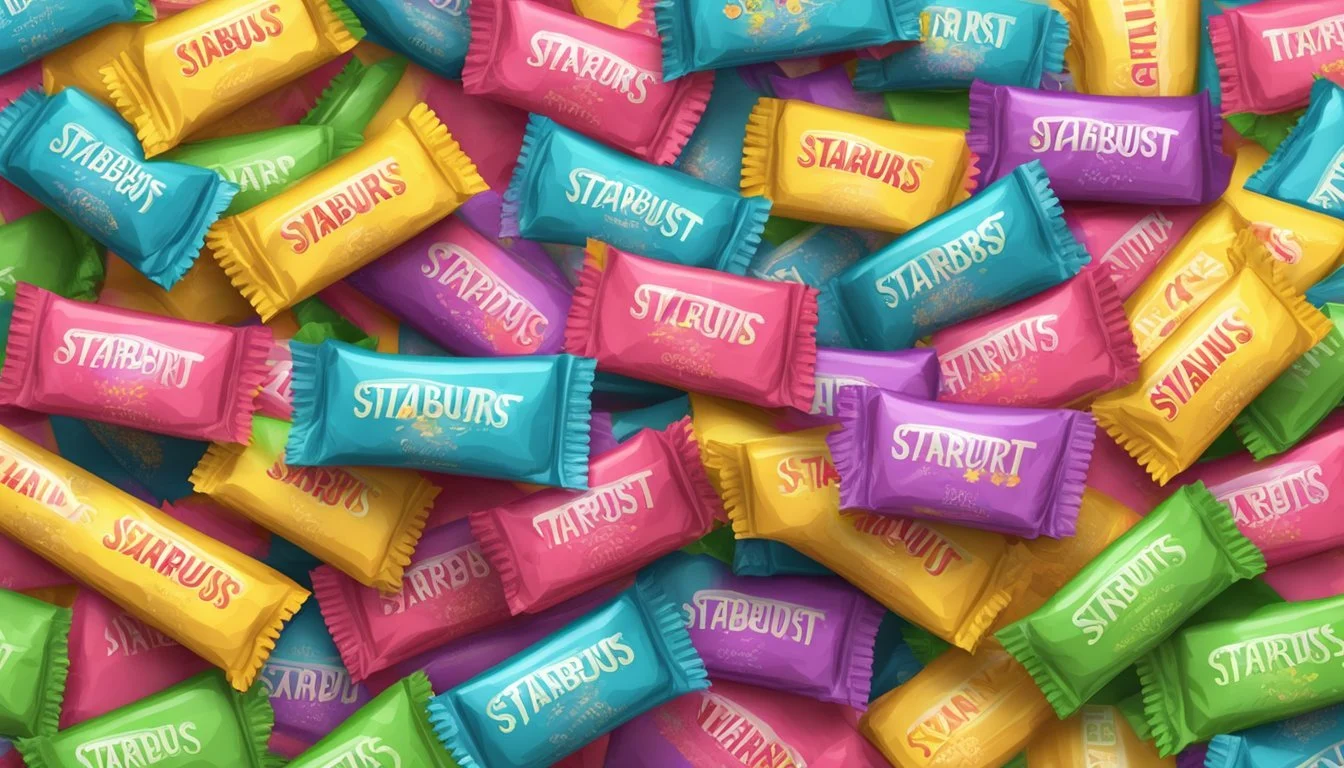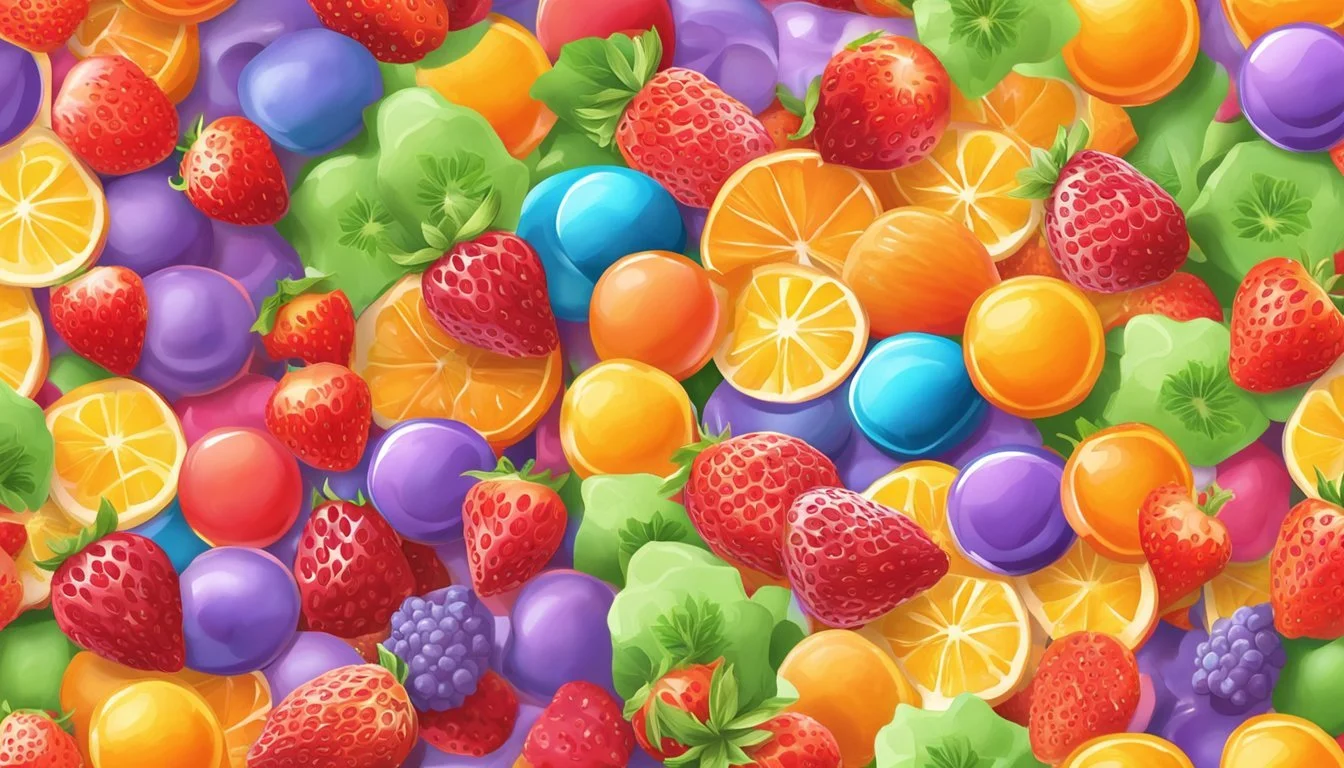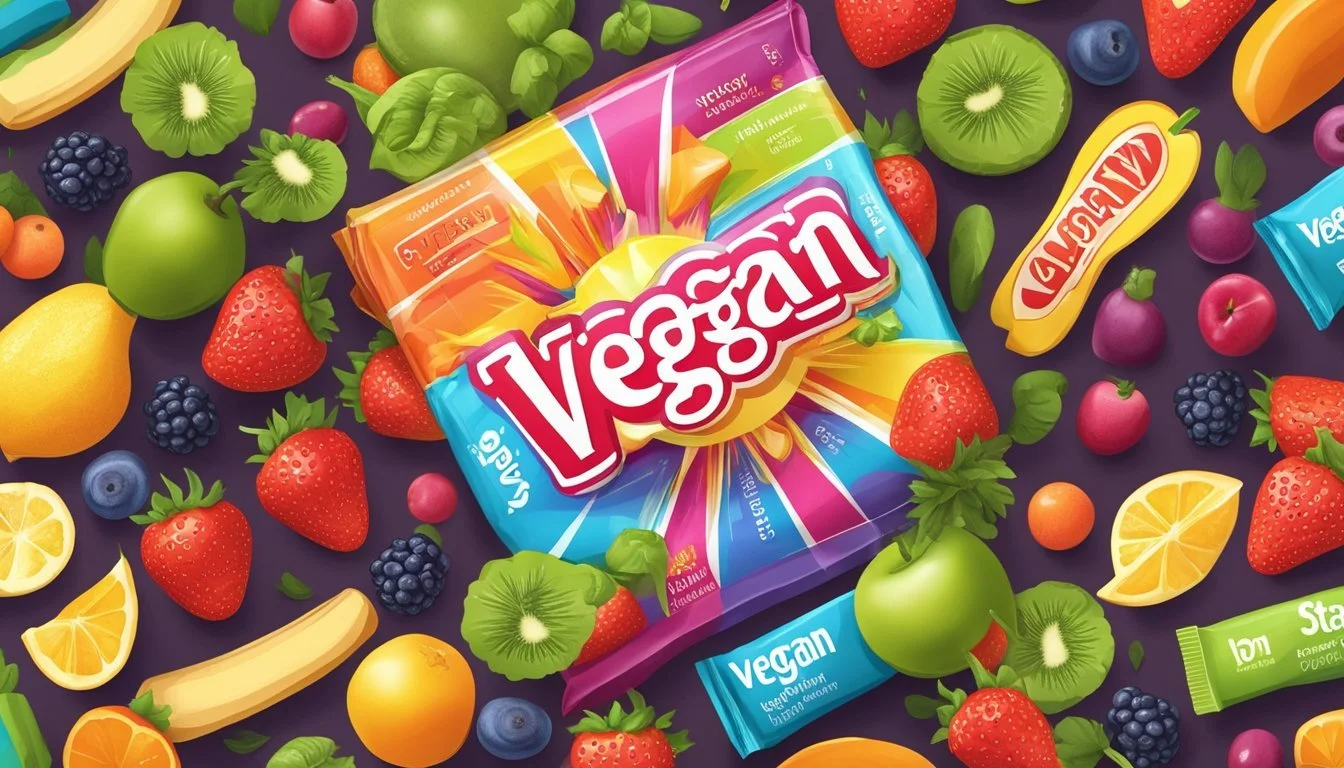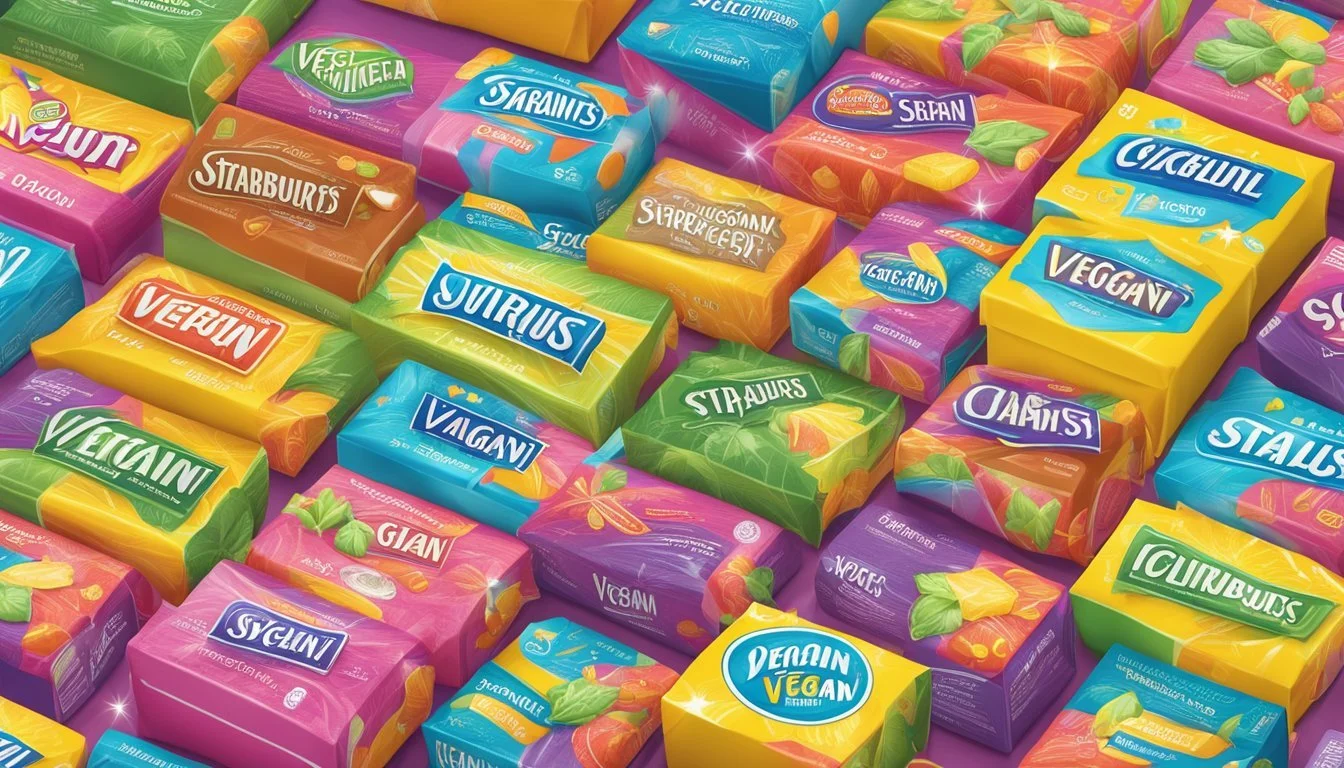Are Starburst Vegan?
Unwrapping the Ingredients List
Starburst candies, known for their chewy texture and fruity flavors, often spark curiosity among those following vegan lifestyles. The issue at hand is the presence of animal-derived ingredients that conflict with vegan principles. In the United States, Starburst products typically include gelatin, which is made from animal bones and is a clear deviation from vegan standards.
In contrast, the formulation of Starburst candies in the United Kingdom does not involve gelatin, aligning them with a vegan-friendly profile. The discrepancy between regions highlights the importance of examining ingredient lists to ensure they meet vegan criteria. Furthermore, other ingredients such as confectioner's glaze, which involves lac beetle secretions, may also impact the vegan status of these candies.
Understanding Veganism
Veganism is a lifestyle choice that individuals make based on ethical, environmental, or health considerations. It involves the exclusion of all forms of animal exploitation and cruelty from one's diet, clothing, or any other aspect of life. Vegans follow a plant-based diet, avoiding all animal products, including meat, dairy, and eggs.
The core principle of veganism is the pursuit of a cruelty-free lifestyle. This compassion extends to a refusal to support industries that rely on animal labor, such as certain forms of entertainment. Adopting a vegan lifestyle is not only about diet but about making conscious choices that reflect a commitment to animal welfare.
Vegan-friendly products are those that do not contain animal ingredients and have not been tested on animals. A product being plant-based does not automatically make it vegan-friendly; it must also be free of animal involvement in its production.
Here's a comparison between related terms:
Term Diet Inclusion Lifestyle Impact Vegan Plant-based only; no animal-derived ingredients. Extends to clothing, products, etc. No animal testing. Vegetarian No meat, but may include other animal products like dairy or eggs. Mainly diet-focused, less stringent on other lifestyle aspects. Plant-based Focuses on plants for diet but can include animal products occasionally. Diet-centric; does not typically apply to other lifestyle choices.
While both vegans and vegetarians avoid meat, a vegan lifestyle requires a wider scope of consideration, ensuring that all consumed or used products are not a byproduct of animal suffering. A vegetarian might consume animal-derived products like cheese or honey, while these would not be part of a vegan-friendly diet. Additionally, a plant-based diet tends to be adopted for health reasons and is not necessarily free of all animal products, unlike a vegan diet which is both health and ethics-focused.
Starburst Candies Overview
Starburst is a renowned line of fruit-flavored, chewy candies that have become a staple in the confectionery market. They are known for their vibrant packaging and distinct square shapes.
Origins and Manufacturer
Starburst candies were originally introduced in the United Kingdom in 1960 under the name "Opal Fruits." The brand was created by Peter Pfeffer during a competition hosted by Mars, the manufacturer responsible for Starburst. In 1967, the candy was rebranded as "Starburst" and expanded to the United States. Mars, Inc., one of the largest confectionery manufacturers globally, continues to produce Starburst candies and has adapted its formulas for various regional markets.
Starburst Varieties
Over the years, Mars, Inc. has developed multiple varieties of Starburst to cater to different tastes and dietary restrictions. The classic Starburst flavors include Strawberry, Cherry, Orange, and Lemon. The traditional U.S. recipe contains non-vegan ingredients like gelatin, while their counterparts from the UK do not use animal-derived products, thereby offering a vegan-friendly option. Moreover, Mars has recently begun offering gelatin-free gummies in the United States, indicating a shift towards plant-based alternatives.
Key Ingredients of Starburst
Starburst candies are a colorful and popular treat known for their chewy texture and fruity flavors. However, their suitability for certain diets, specifically a vegan diet, is determined by their key ingredients, which can be broadly categorized as animal-derived, plant-derived, and artificial additives.
Animal-Derived Ingredients
Starburst in the United States often includes gelatin, sourced from animal bones and skin, making them unsuitable for vegans. Additionally, certain varieties of Starburst may contain confectioner's glaze (shellac), which is derived from lac beetle secretions. Other non-vegan components like carnauba wax, often used for a glossy finish on candies, is sometimes sourced from animal products.
Plant-Derived Ingredients
Main ingredients in Starburst include sugar, corn syrup, and fruit juice from concentrate, which are all plant-derived. Pectin, a gelling agent found in many fruit-based products and an alternative to gelatin, is derived from fruits. Furthermore, natural flavors might be included, which are generally extracted from plant sources but occasionally can have animal origins.
Artificial Additives
Starburst contains several artificial additives to enhance color and flavor. These include artificial colors, which are synthesized in a lab, and artificial flavors, chemical compounds designed to mimic natural tastes. Citric acid, often included for a tangy flavor, and various starches, used to create the chewy texture, are synthetically produced or derived from plant materials like corn.
The specific ingredients can vary between different Starburst products and manufacturing locations. For instance, Starburst candies made in the UK do not contain gelatin, distinguishing them as vegan-friendly when compared to their US counterparts. Consumers often need to check the ingredients list for each product to determine its vegan status.
Vegan Concerns in Starburst
When examining whether Starburst candies align with vegan diets, several ingredients raise concerns due to their animal origins or controversial production methods.
Gelatin and Animal Bones
Starburst candies in the United States include gelatin as an ingredient, which is derived from collagen found in animal bones and connective tissues. This makes US Starburst products unsuitable for a vegan diet. Gelatin is a common gelling agent in candies and desserts but is clearly of animal origin.
Animal-Based Colorants
Starburst products may use colorants such as Red 40, Yellow 5, Yellow 6, and Blue 1. These synthetic dyes are often tested on animals and can be a point of contention among vegans on ethical grounds. Additionally, some Starburst varieties may contain carmine, a red dye made from crushed insects, which is explicitly non-vegan.
Other Controversial Ingredients
Other ingredients in Starburst candies that may concern vegans include:
Sugar: Some sugar used in candies may be processed with bone char to achieve its white color.
Palm Oil: Although plant-based, its production has significant environmental implications.
Confectioner's Glaze: Often derived from secretions of the lac bug.
These ingredients highlight the nuances of vegan dietary choices, particularly when it comes to processed foods like candies. It's also worth noting that different formulations, such as Starburst Minis or gummies, may have variations in their ingredients that could affect their vegan status.
Comparative Analysis
This section provides a focused look at how Starburst compares to other vegan candies and highlights vegan alternatives that can serve as substitutes for those seeking plant-based options.
Starburst vs. Other Vegan Candies
Starburst chews, popular for their fruity flavor and chewy texture, typically contain gelatin—an animal-based product. This inclusion contrasts starkly with vegan candies which eschew any animal-derived ingredients. For example:
Smart Sweets: These candies are marketed as a healthier alternative, free from artificial sweeteners and using plant-based ingredients for gelling, like tapioca and pectin, to ensure they fit a vegan diet.
Surf Sweets: Owned by Wholesome Sweeteners, Surf Sweets offers a variety of vegan-friendly candies, including gummy bears and jelly beans that are made without gelatin and with organic fruit juice for flavoring.
Vegan Alternatives to Starburst
For those who enjoy Starburst but seek to maintain a vegan lifestyle, there are several alternatives readily available. Here are two noteworthy options:
Smart Sweets Fruity Gummy Bears: They provide a similar burst of fruit flavors and are gelatin-free.
Surf Sweets Organic Fruity Bears: These are a suitable substitute, offering a chewy texture and natural flavors without the use of animal products.
Each alternative ensures that vegans can enjoy indulgent treats without compromising their ethical choices.
Environmental and Ethical Aspects
The production and ingredients of Starburst candies intersect with various environmental and ethical concerns. One primary issue is the presence of gelatin, a product derived from animals, which raises questions not only about veganism but also about the meat industry's environmental footprint. This includes concerns like resource use and greenhouse gas emissions associated with livestock farming.
Additionally, palm oil used in food products, such as Starburst, is often linked to deforestation and habitat loss. Sustainable palm oil practices are crucial to mitigating these environmental impacts. Vegan consumers typically scrutinize such practices due to their potential to harm the ecosystem.
The confectioner’s glaze, also known as shellac, which lends a shiny appearance to many processed foods, is derived from lac bugs, posing a conflict with strict vegan principles concerning the exploitation of all living beings for human use.
Natural and Artificial Flavors: These ingredients frequently come under scrutiny regarding their sourcing, and some vegans take into account whether these flavors have been tested on animals.
Artificial Colors: Sometimes associated with animal testing, these are synthetic and can carry further undisclosed environmental costs due to their production processes.
Consumers are increasingly demanding transparency in the food industry, advocating for a clear understanding of where ingredients come from and how they affect the planet. The traceability of ingredients in processed food like Starburst is therefore not just a matter of diet but also of environmental responsibility and ethics.
Starburst Product Lines
The Starburst brand offers a variety of product lines that cater to different preferences and occasions. While the ingredients vary across these lines, the common quality shared by all Starburst products is their vibrant fruit flavoring.
Starburst Gummies and Minis
Starburst Gummies are an alternative to the classic chew, reimagined as a soft, fruit-flavored gummy. Although the standard Starburst Gummies include gelatin, which is not vegan, there have been innovations to introduce a vegan gummy option without animal-derived ingredients. Starburst Minis are bite-sized, unwrapped versions of the original chews. However, consumers should be mindful of ingredients, as some might not align with a vegan diet.
Starburst Gummies
Ingredients: Include non-vegan gelatin
Vegan Option: Recent development of a plant-based line
Starburst Minis
Ingredients: Potentially non-vegan ingredients; should review packaging for specifics
Seasonal and Limited Editions
Seasonal offerings, like Starburst Halloween candies, often have unique flavors or shapes and may follow the same ingredient profile as the standard candies. Ingredients should be checked for each special edition to determine vegan suitability. Limited edition products, such as Starburst Swirlers, bring a twist to the taste experience and may contain differing ingredients from the original chew.
Halloween
Ingredients: Similar to standard product lines; ingredient check recommended
Starburst Swirlers
Ingredients: May vary from original Starburst chews; always check the label
Dietary Considerations
When considering whether Starburst is suitable for various diets, one must evaluate their ingredients with regard to potential allergens and dietary restrictions, as well as the importance of consuming such sweet treats in moderation due to their refined sugar content.
Gluten and Allergen Information
Starburst candies are generally gluten-free, which makes them a suitable option for individuals with celiac disease or gluten sensitivity. As for allergens, while Starburst does not contain nuts, they do include corn syrup and soybean oil, which can be common allergens. Moreover, they are manufactured in facilities that may process other allergens, thus cross-contamination is possible. Individuals with allergies are advised to carefully read the labels and consider their level of sensitivity.
Gluten-free: Yes
Common allergens:
Corn syrup
Soybean oil
Eating Starburst in Moderation
Despite being free of some allergens, Starburst still contain substantial amounts of refined sugars, such as beet sugar and cane sugar, and tapioca dextrin. These ingredients can lead to health issues if consumed excessively. It is essential for individuals to enjoy Starburst in moderation as part of a balanced diet.
Refined sugars:
Beet sugar
Cane sugar
Other ingredients to note: Tapioca dextrin
Consumption advice: In moderation









